Related Research Articles
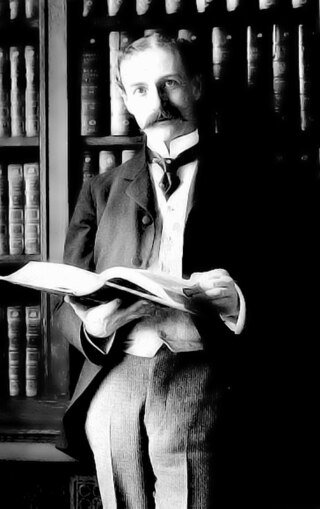
George Herbert Putnam was an American librarian. He was the eighth Librarian of Congress from 1899 to 1939. He implemented his vision of a universal collection with strengths in many languages, especially from Europe and Latin America.

James Hadley Billington was an American academic and author who taught history at Harvard and Princeton before serving for 42 years as CEO of four federal cultural institutions. He served as the 13th Librarian of Congress after being nominated by President Ronald Reagan in 1987, and his appointment was approved unanimously by the U.S. Senate. He retired as Librarian on September 30, 2015.

A national library is a library established by a government as a country's preeminent repository of information. Unlike public libraries, these rarely allow citizens to borrow books. Often, they include numerous rare, valuable, or significant works. A national library is that library which has the duty of collecting and preserving the literature of the nation within and outside the country. Thus, national libraries are those libraries whose community is the nation at large. Examples include the British Library in London, and the Bibliothèque nationale de France in Paris.

Ainsworth Rand Spofford was an American journalist, prolific writer and the sixth Librarian of Congress. He served as librarian from 1864 to 1897 under the administration of ten presidents. A great admirer of Benjamin Franklin, he wrote a twenty-one page introduction in Franklin's autobiography, which he edited and published.
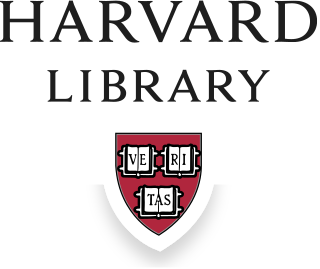
Harvard Library is the network of Harvard University's libraries and services. It is the oldest library system in the United States and both the largest academic library and largest private library in the world. Its collection holds over 20 million volumes, 400 million manuscripts, 10 million photographs, and one million maps.
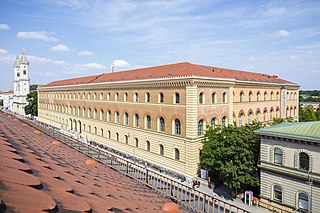
The Bavarian State Library in Munich is the central "Landesbibliothek", i. e. the state library of the Free State of Bavaria, the biggest universal and research library in Germany and one of Europe's most important universal libraries. With its collections currently comprising around 10.89 million books, it ranks among the leading research libraries worldwide. The Bayerische Staatsbibliothek furthermore is Europe's second-largest journals library. Furthermore, its historical holdings encompass one of the most important manuscript collections of the world, the largest collection of incunabula worldwide, as well as numerous further important special collections. Its collection of historical prints before 1850 totals almost one million units.

TheNational Library of Russia, located in Saint Petersburg, is the first, and one of three national public libraries in Russia. The NLR is currently ranked among the world's major libraries. It has the second biggest library collection in the Russian Federation, a treasury of national heritage, and is the All-Russian Information, Research and Cultural Center. Over the course of its history, the library has aimed for comprehensive acquisition of the national printed output and has provided free access to its collections.

The Law Library of Congress is the law library of the United States Congress. The Law Library of Congress holds the single most comprehensive and authoritative collection of domestic, foreign, and international legal materials in the world. Established in 1832, its collections are currently housed in the James Madison Memorial Building of the Library of Congress. Law staff rely on and utilize 2.9 million volumes of primary legal sources, 102.18 million microforms, 99,000 reels of microfilm, 3.18 million pieces of microfiche, and 15,600 tangible electronic resources, making it is the largest law library in the world.

Columbia University Libraries is the library system of Columbia University and one of the largest academic library systems in North America. With 15.0 million volumes and over 160,000 journals and serials, as well as extensive electronic resources, manuscripts, rare books, microforms, maps, and graphic and audio-visual materials, it is the fifth-largest academic library in the United States and the largest academic library in the State of New York. Additionally, the closely affiliated Jewish Theological Seminary Library holds over 400,000 volumes, which combined makes the Columbia University Libraries the third-largest academic library, and the second-largest private library in the United States.
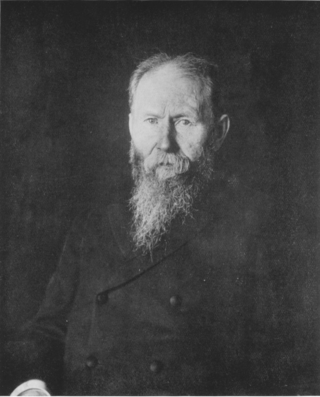
Jeremiah Curtin was an American ethnographer, folklorist, and translator. Curtin had an abiding interest in languages and was conversant with several. From 1883 to 1891 he was employed by the Bureau of American Ethnology as a field researcher documenting the customs and mythologies of various Native American tribes.

The Library Of Agudas Chassidei Chabad is a research library owned by Agudas Chasidei Chabad whose content was collected by the rebbes of Chabad-Lubavitch. The library is housed next to the Lubavitch world headquarters at 770 Eastern Parkway in Brooklyn, New York, and is utilized by Chabad and general Judaic scholars. It is viewed by thousands of visitors each year.

The Library of the Russian Academy of Sciences is a large state-owned Russian library based in Saint Petersburg on Vasilievsky Island and open to employees of institutions of the Russian Academy of Sciences and scholars with higher education. It is a part of the academy and includes, besides the central collection, the library collections housed by specialized academic institutions in Saint Petersburg and other cities.
Hans Peter Kraus, also known as H. P. Kraus or HPK, was an Austrian-born book dealer described as "without doubt the most successful and dominant rare book dealer in the world in the second half of the 20th century" and in a league with other rare book dealers such as Bernard Quaritch, Guillaume de Bure and A.S.W. Rosenbach. Kraus specialized in medieval illuminated manuscripts, incunables, and rare books of the 16th and 17th centuries, but would purchase and sell almost any book that came his way that was rare, valuable and important. He prided himself in being "the only bookseller in history...to have owned a Gutenberg Bible and the Psalters of 1457 and 1459 simultaneously," stressing that "'own' here is the correct word, as they were bought not for a client's account but for stock."

The Eaton Collection of Science Fiction and Fantasy, formerly known as the J. Lloyd Eaton Collection of Science Fiction, Fantasy, Horror, and Utopian Literature, is "the largest publicly accessible collection of science fiction, fantasy, horror and utopian and dystopian literature in the world". It is housed in Special Collections and Archives of the UCR Libraries at the University of California, Riverside. It consists of more than 300,000 items, including hardcover and paperback books, SF fanzines, film and visual material, and comic books, including manga and anime, as well as a variety of archival materials.
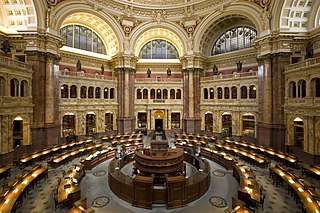
The Library of Congress (LOC) is a research library in Washington, D.C., that serves as the library and research service of the U.S. Congress and the de facto national library of the United States. Founded in 1800, the library is the United States's oldest federal cultural institution. The library is housed in three elaborate buildings on Capitol Hill. It also maintains a conservation center in Culpeper, Virginia. The library's functions are overseen by the Librarian of Congress, and its buildings are maintained by the Architect of the Capitol. The Library of Congress is one of the largest libraries in the world. Its collections contain approximately 173 million items, and it has more than 3,000 employees. Its collections are "universal, not limited by subject, format, or national boundary, and include research materials from all parts of the world and in more than 470 languages".

The Harvard–Yenching Library is the primary location for East Asia-related collections at Harvard Library. In addition to East Asian languages, it houses collections in European languages and Southeast Asian language (Vietnamese). Totaling more than 1.5 million volumes, the Harvard-Yenching Library has one of the largest collections in East Asian studies outside of Asia. The library has been located at 2 Divinity Avenue on the Cambridge campus of Harvard University since around 1957. The building was originally built in 1929 for Harvard's Institute of Geographical Exploration and currently houses part of the Harvard-Yenching Institute and the Department of East Asian Languages and Civilizations, in addition to the Harvard-Yenching Library.

The University of Warsaw Library is a library of the University of Warsaw, Poland. Established in 1816 following the formation of the Royal Warsaw University, it was led by the first director Samuel Linde, a linguist and educator. By 1831, the library housed over 134,000 volumes. However, the November Uprising in 1831 led to its temporary closure and the confiscation of many books by Russian authorities. The library reopened in 1862 as the Main Library and continued to expand, requiring a new building by 1894 to accommodate its expanding collection.
The Victor Kamkin Bookstore was a retail book shop with a main location in Rockville, Maryland and a smaller store in New York City in the United States. Established in 1953 by Victor Kamkin and his wife Elena Kamkina, the store maintained continuous operation throughout the Cold War era, specializing in material published in the Soviet Union.
Simeon Joachimovich Bolan was a Russian-born book dealer in New York, specializing in Russian-language books.

Otto Heinrich Friedrich Vollbehr was a German chemist, book collector, and Nazi propagandist.
References
- 1 2 Karlowich, Robert A. "Israel Perlstein and the Russian Book Trade in the U.S.". Association of College and Research Libraries: Slavic and East European Section (3): 52.
- ↑ Miller, Lawrence H. (September 1975). "News of the Profession: Israel Perlstein, 1897-1975". Slavic Review. 34 (3): 673. doi:10.1017/S0037677900072612. JSTOR 2495649 – via JSTOR.
- ↑ Pliguzov, Andrei; Smith, Abby (March 18, 1996). "The Bolsheviks in Business: The Russian Book Trade After the Revolution". Library of Congress Information Bulletin. 55 (5): 102.
- ↑ Semyonova, Natalya; Iljine, Nicolas V., eds. (2013). Selling Russia's Treasures: The Soviet Trade in Nationalized Art, 1917-1938. New York: Abbeville Press. p. 250. ISBN 9780789211545.
- ↑ Williams, Robert C. (1980). Russian art and American money, 1900-1940. Cambridge: Harvard University Press. p. 38.
- ↑ Leich, Harold M. (2011). "Librarians of Congress and the Russian Collections of the Library from the 19th Century to the Present Day". Solanus. 22: 148.
- ↑ Leich, Harold M. "The Czar's Library: Books from Russian Imperial Palaces (European Reading Room, Library of Congress)". www.loc.gov. Retrieved 2024-04-16.
- ↑ Horbal, Bogdan. "Research Guides: Slavic and East European Collections: History". New York Public Library. Retrieved 2024-04-16.
- ↑ Tarsis, Irina (2009). "BOOK DEALERS, COLLECTORS AND LIBRARIANS: MAJOR ACQUISITION SOURCES OF RUSSIAN IMPERIAL BOOKS AT HARVARD, 1920s-1950s". Canadian American Slavic Studies. 43 (1): 427. doi:10.1163/221023909X00183.
- ↑ Metcalf, Keyes DeWitt (1988). My Harvard Library years, 1937-1955 : a sequel to Random recollections of an anachronism. Cambridge: Harvard College Library. p. 48. ISBN 0674596005.
- ↑ Horecky, Paul L., ed. (1976). East Central and Southeast Europe : a handbook of library and archival resources in North America. Santa Barbara: Clio Press. p. 189.
- ↑ Miller, Robert A.; Moriarty, John H. (October 1966). "University Library Development in Indiana, 1910 to 1966". Library Trends: 249.